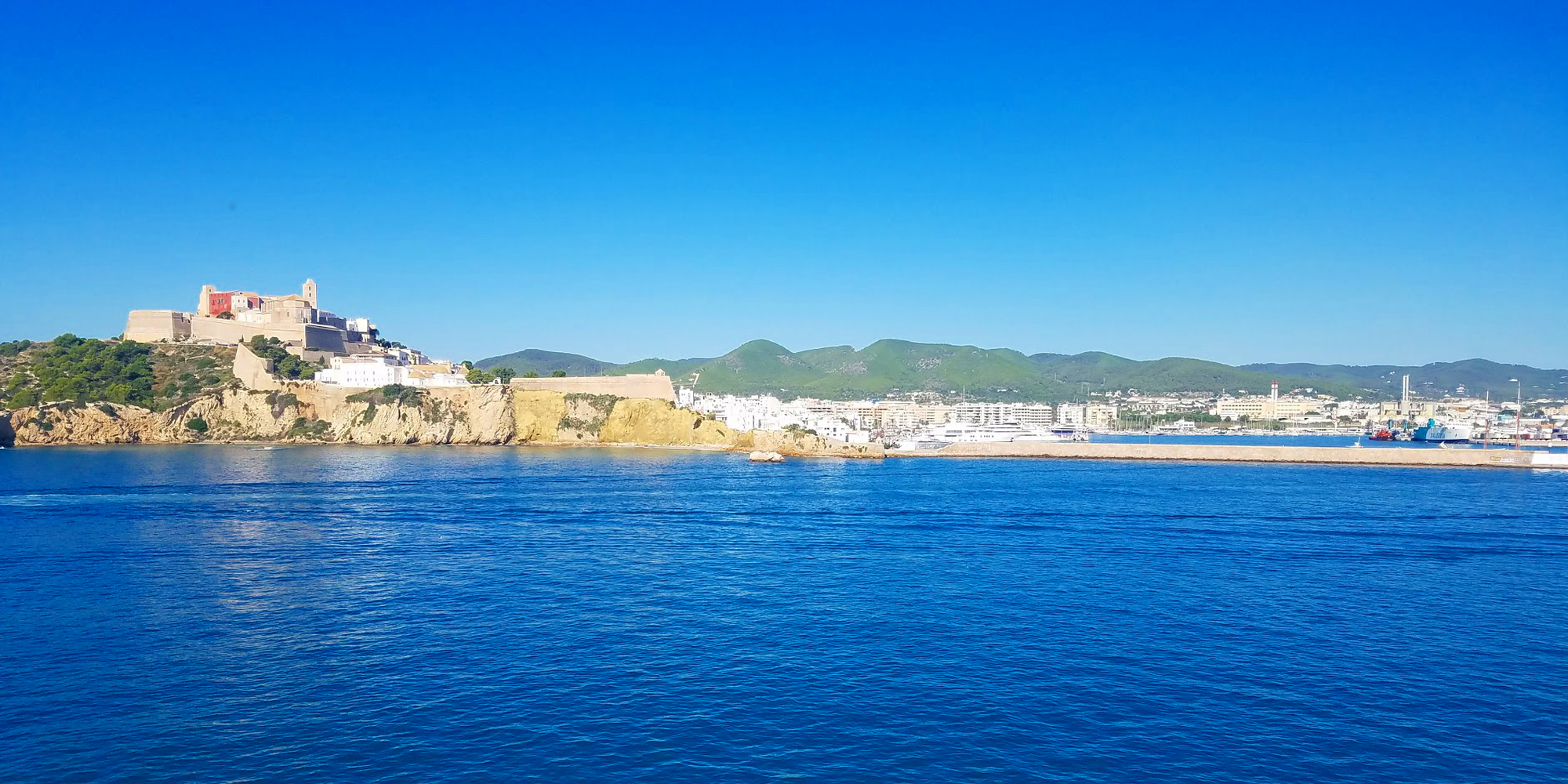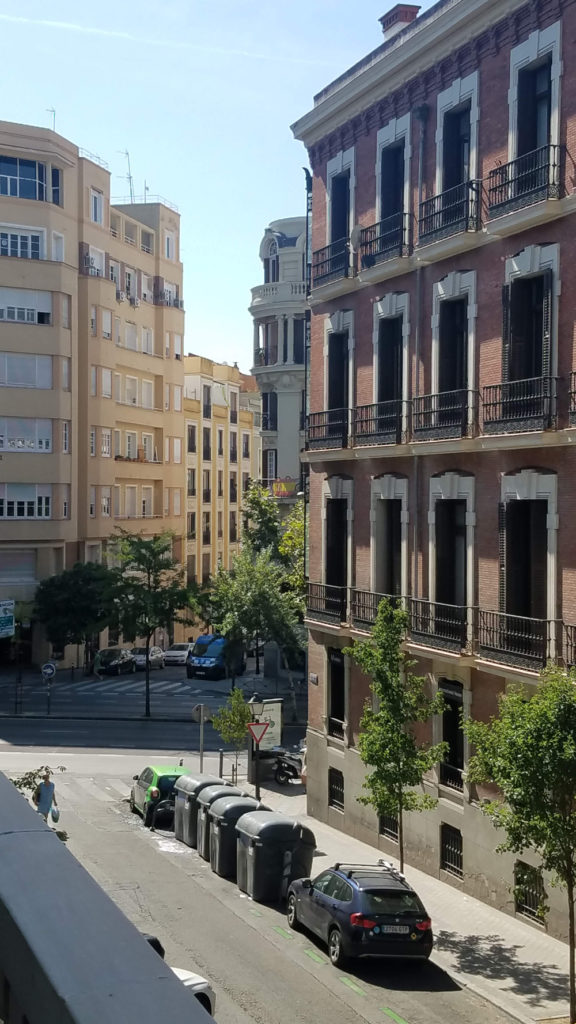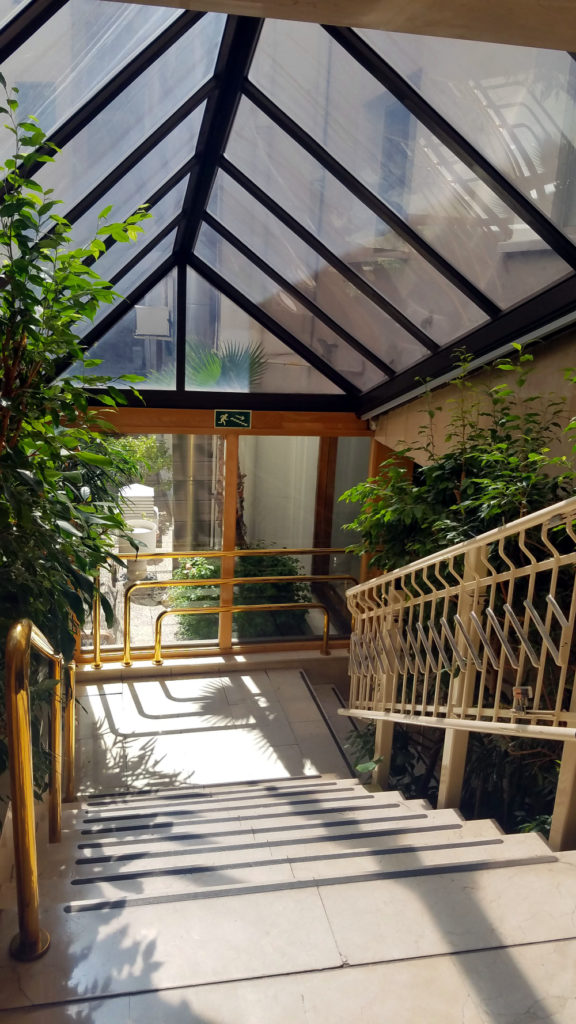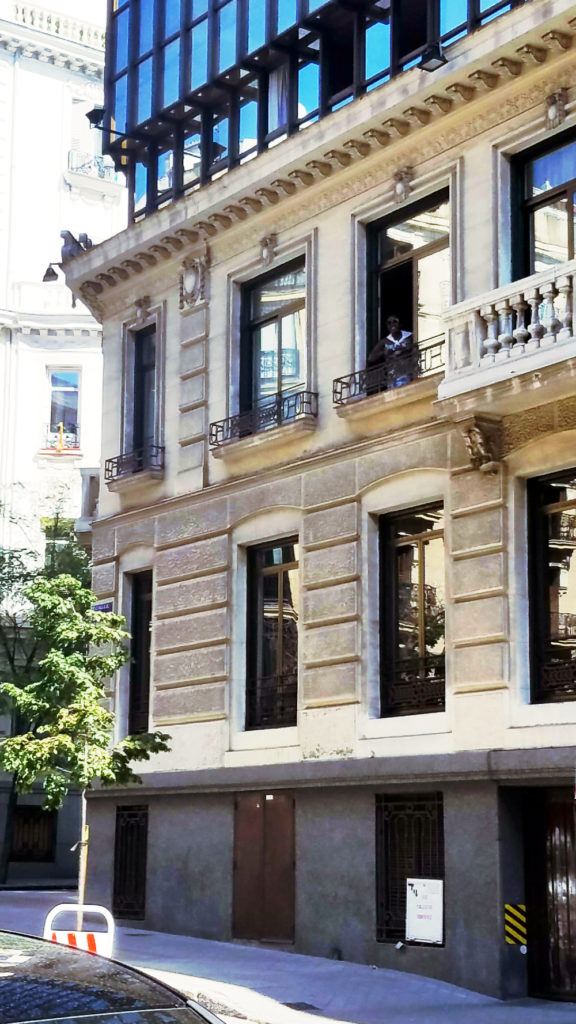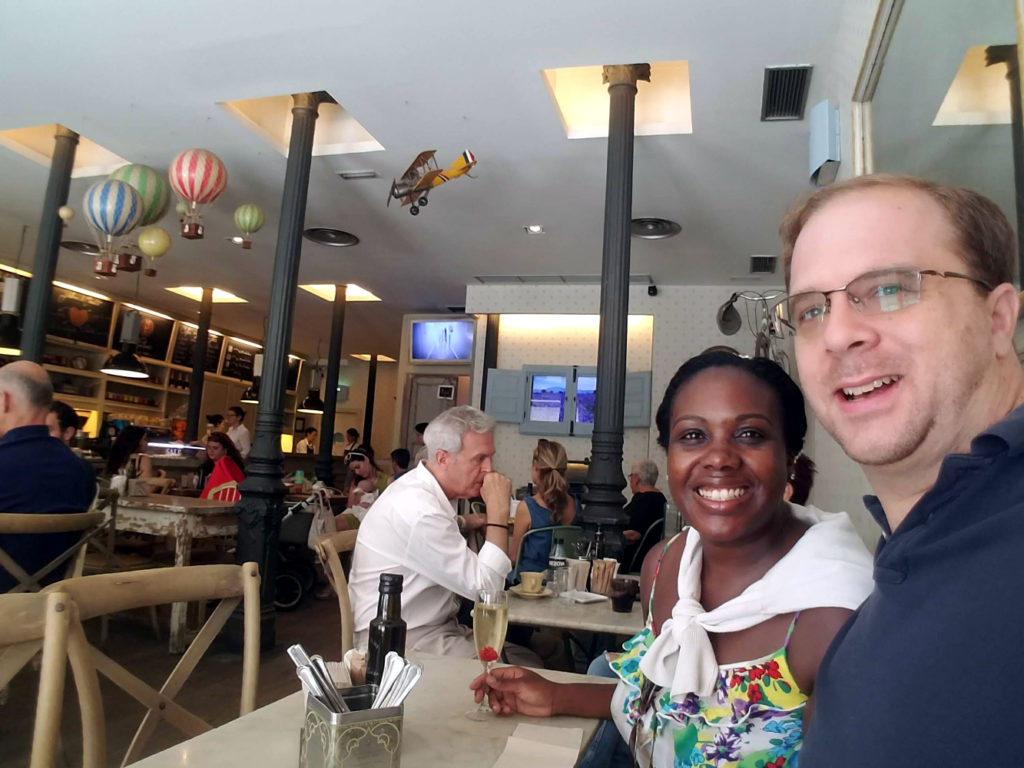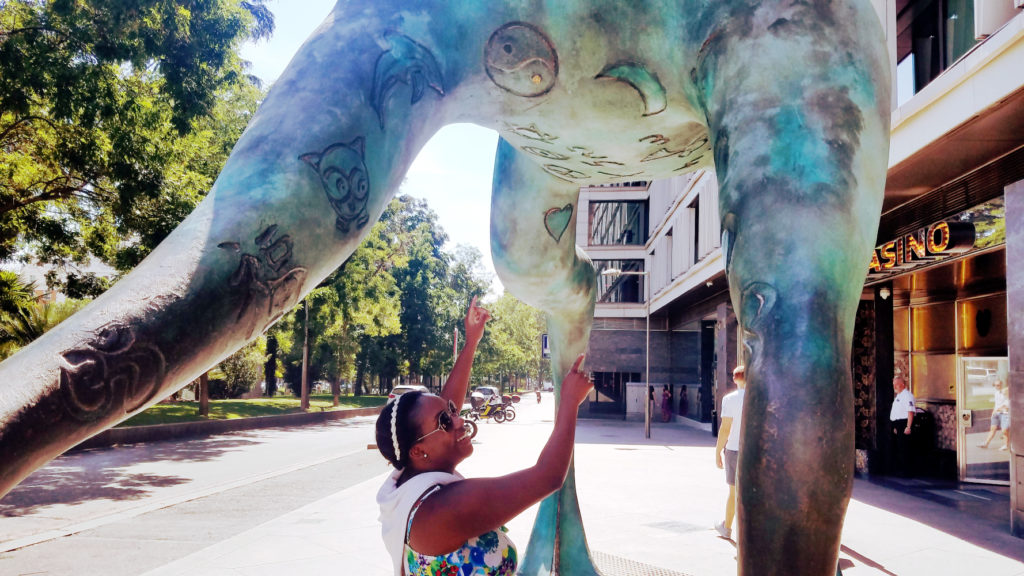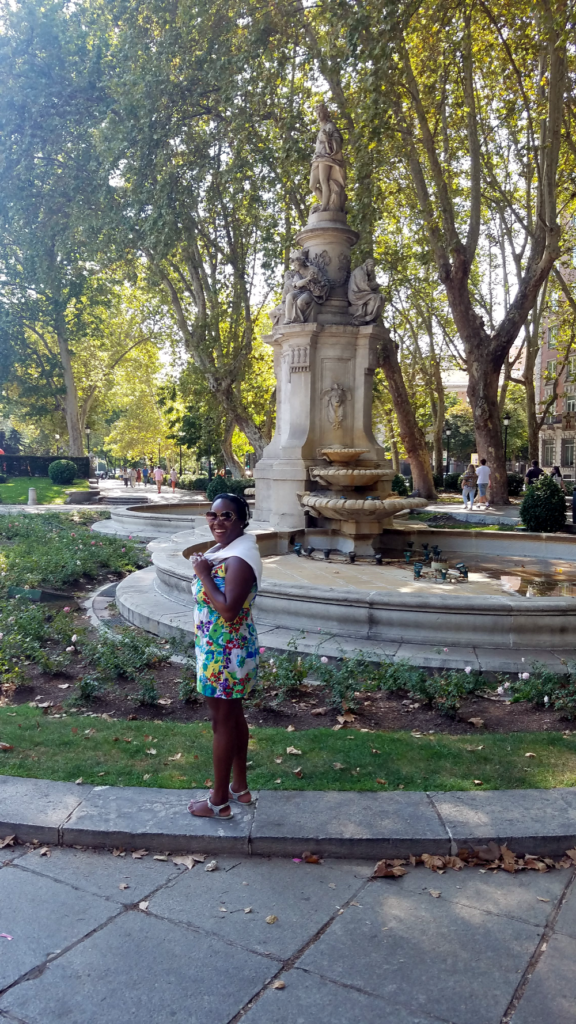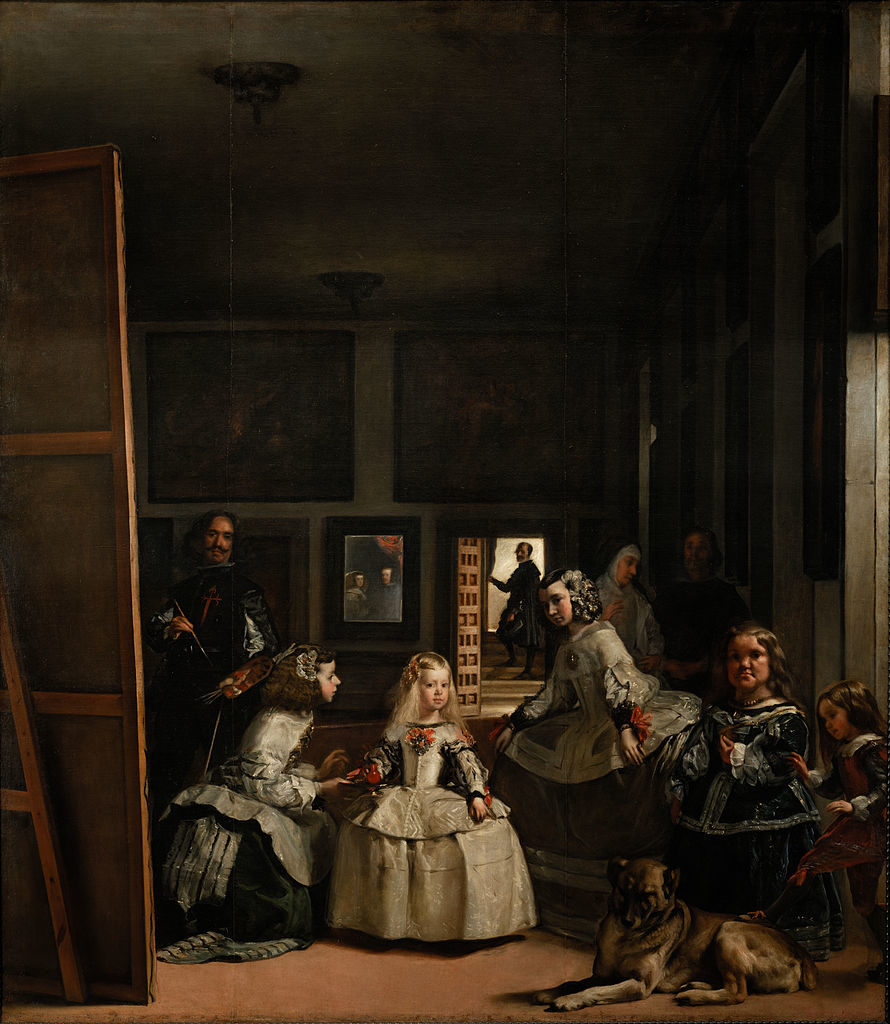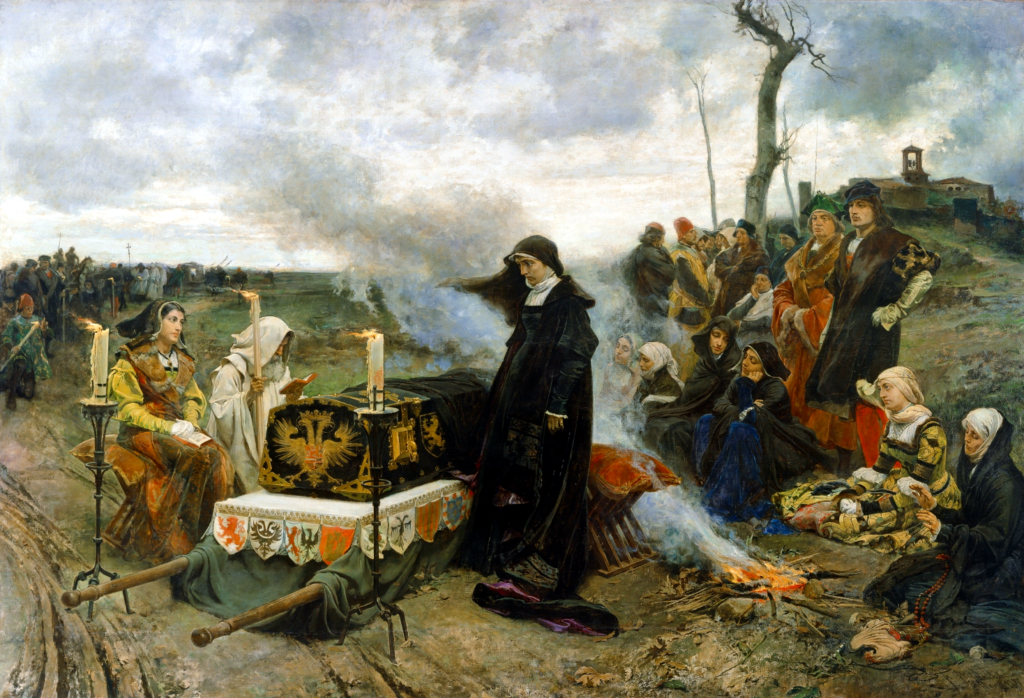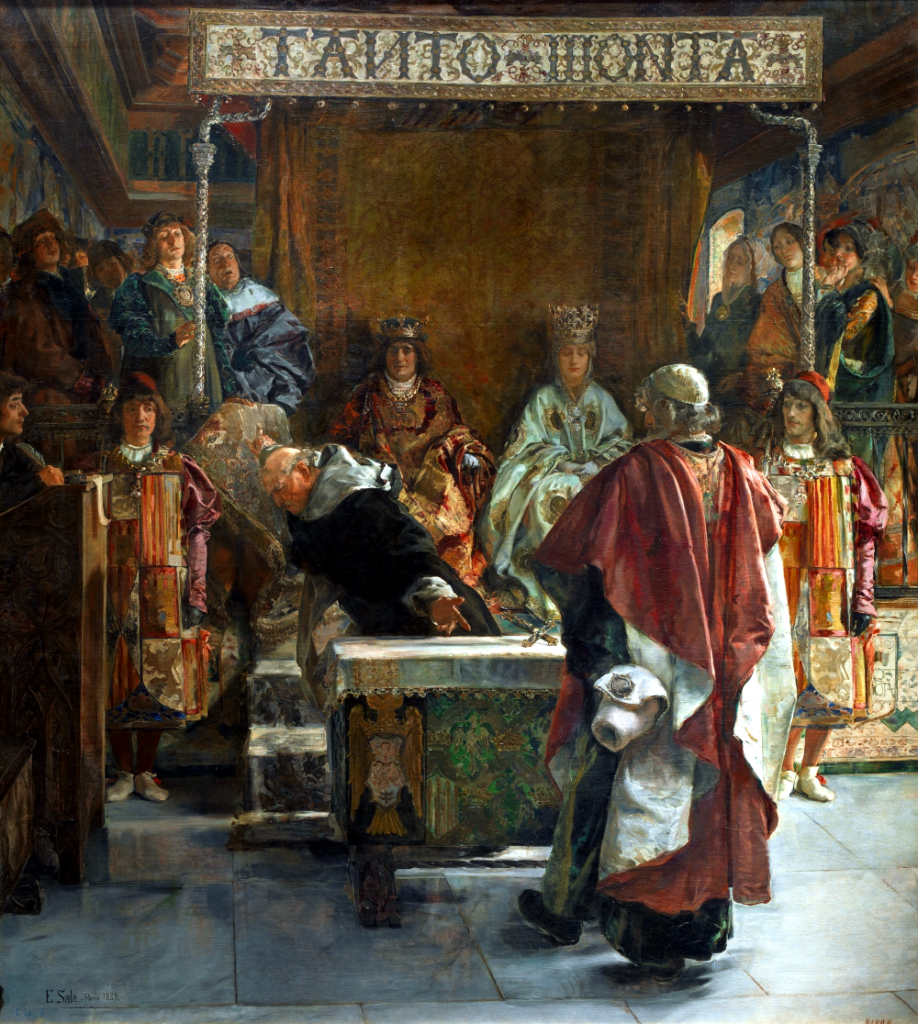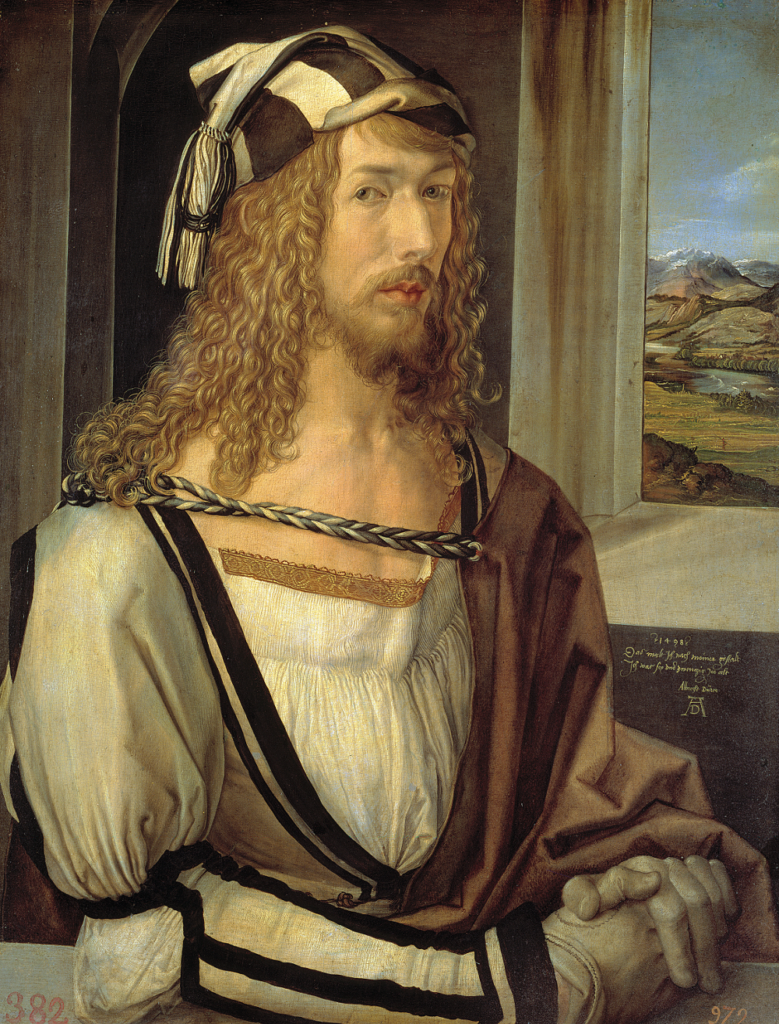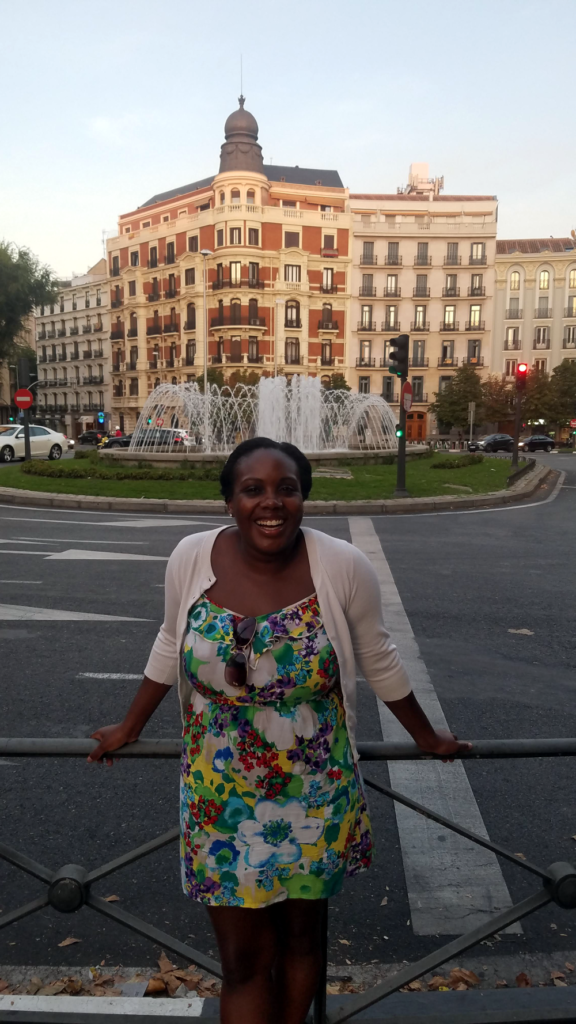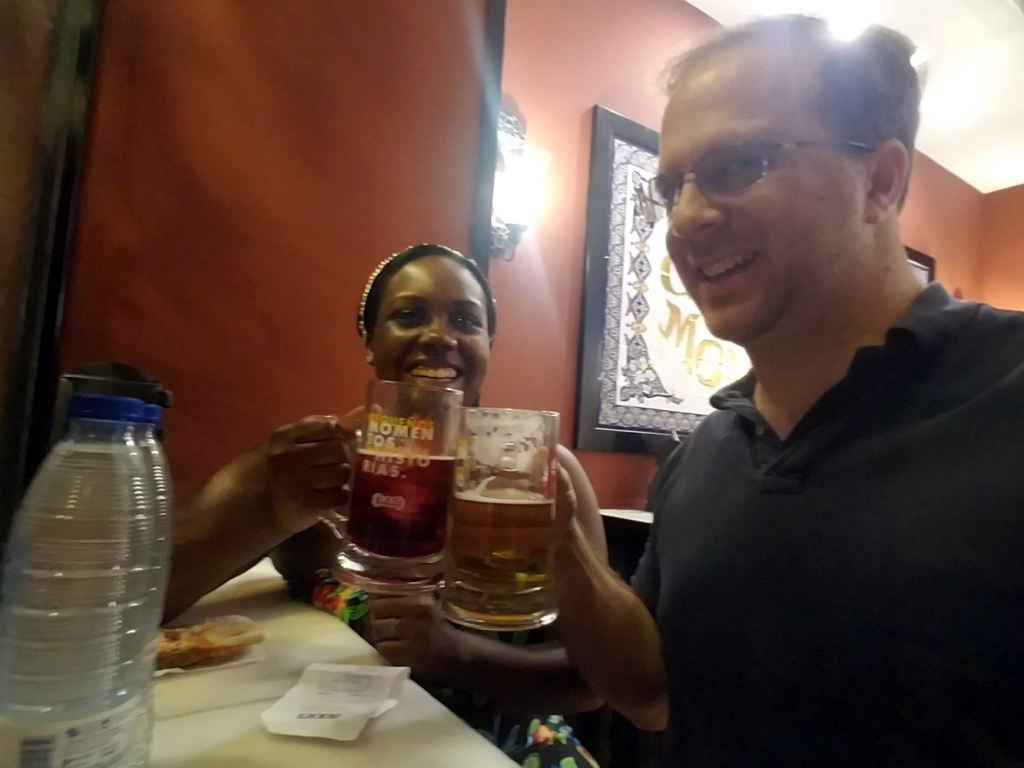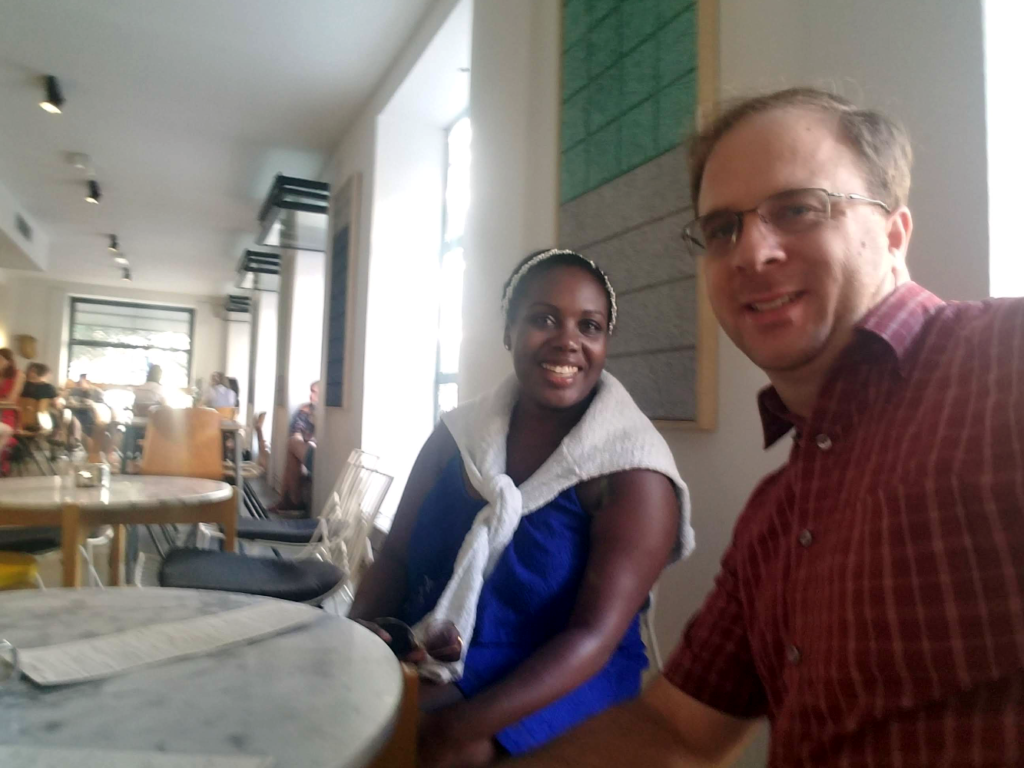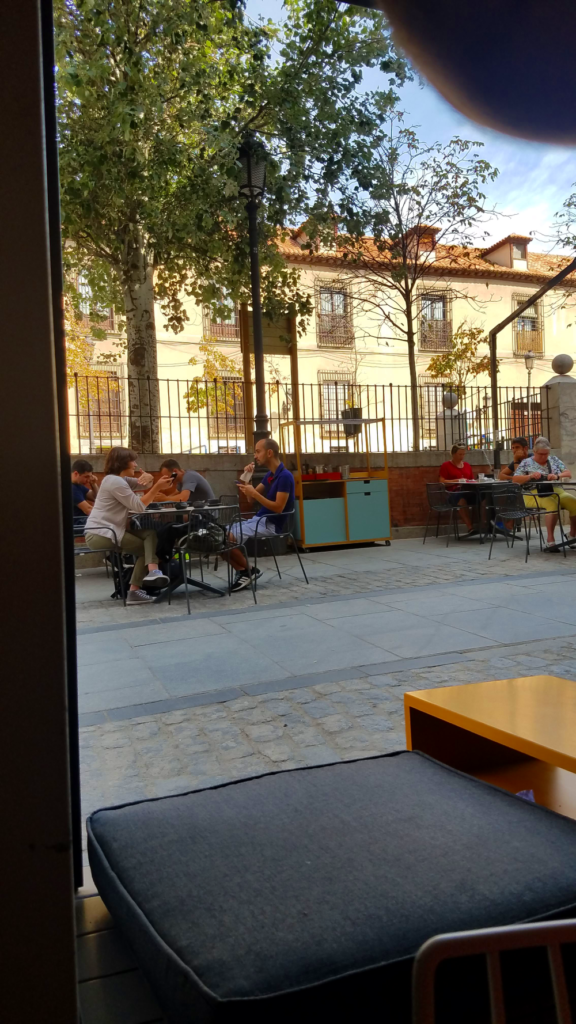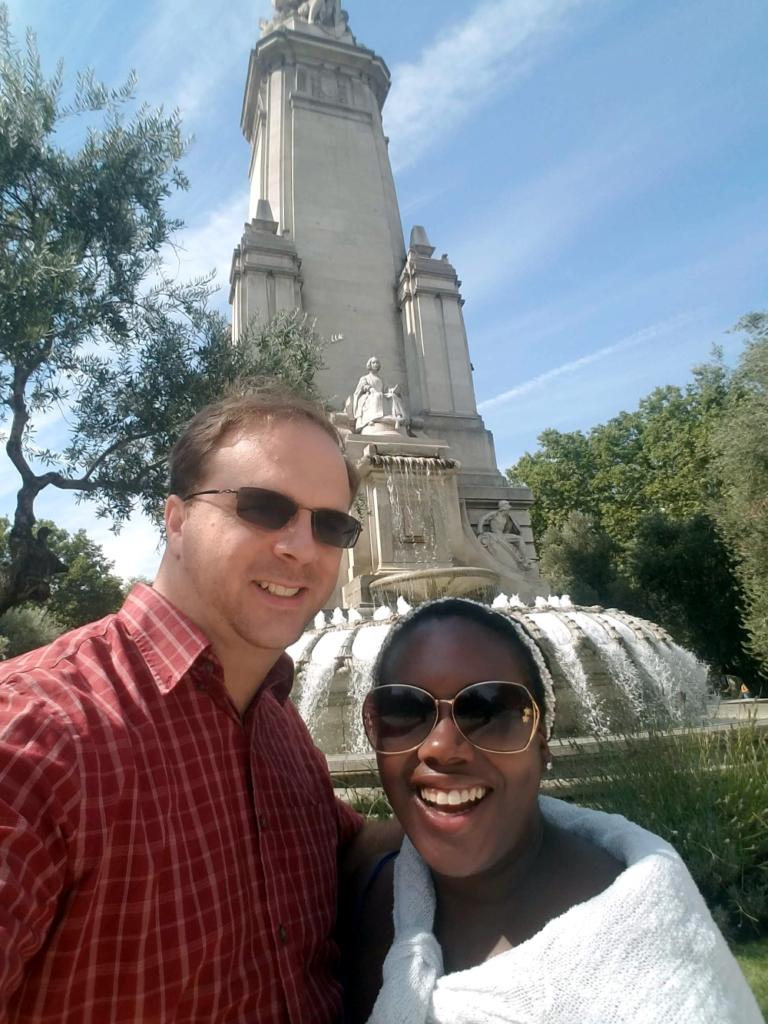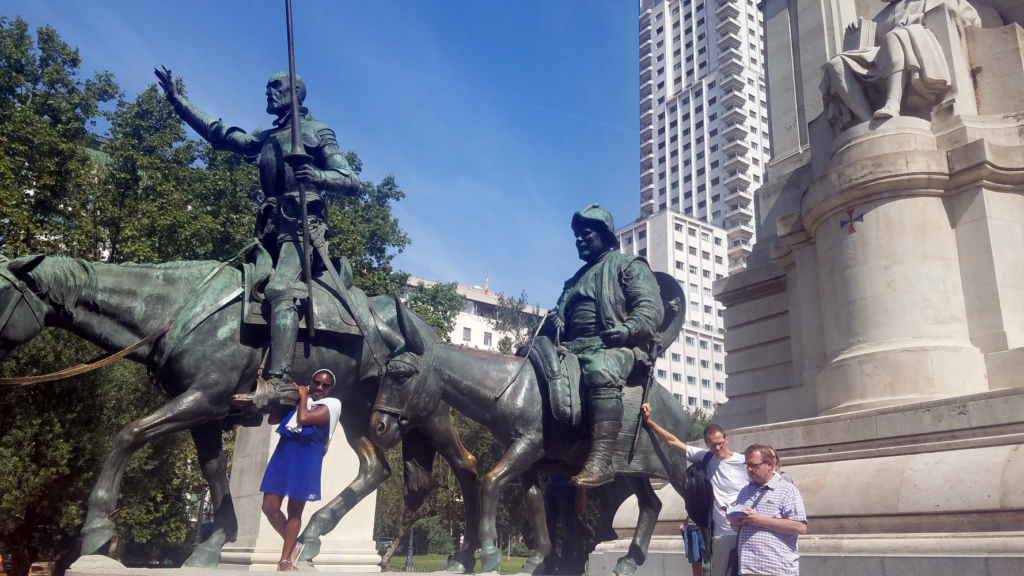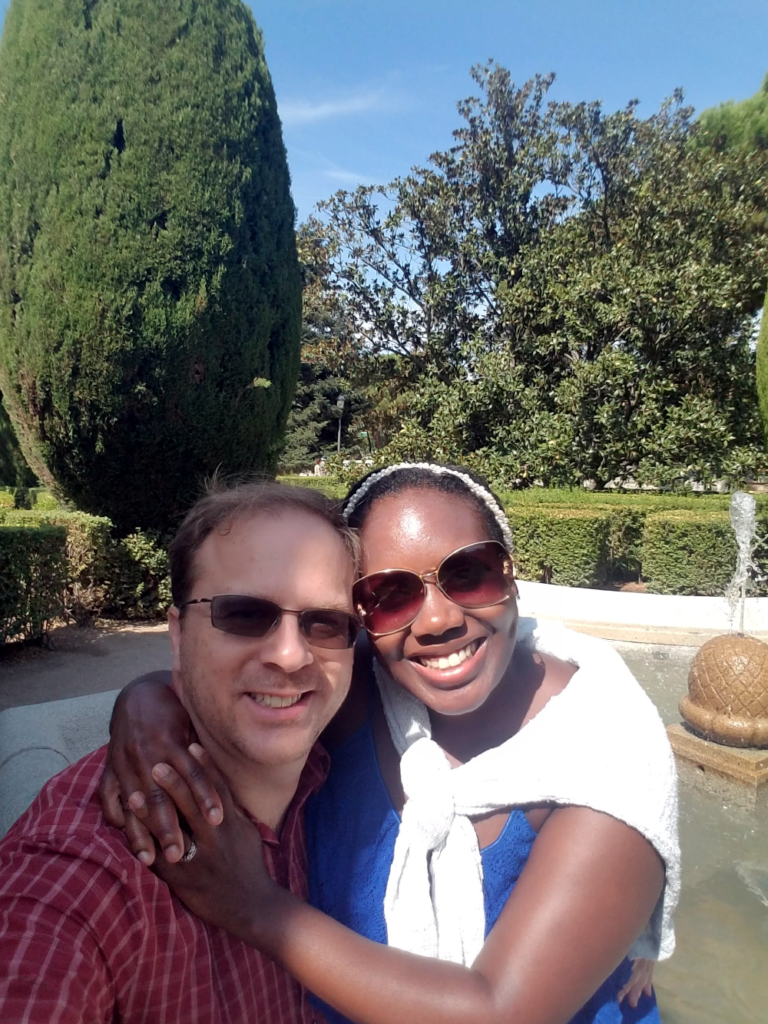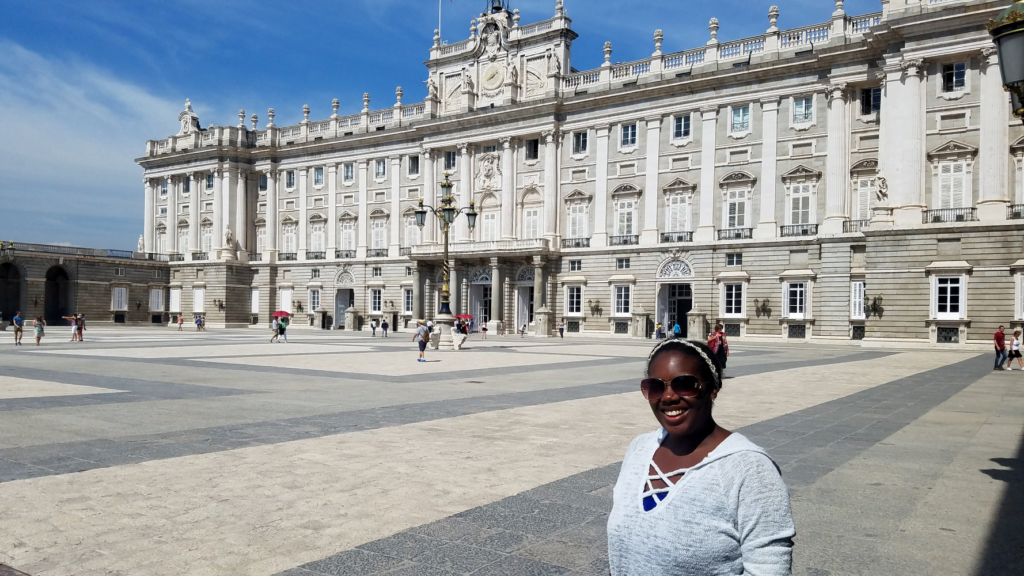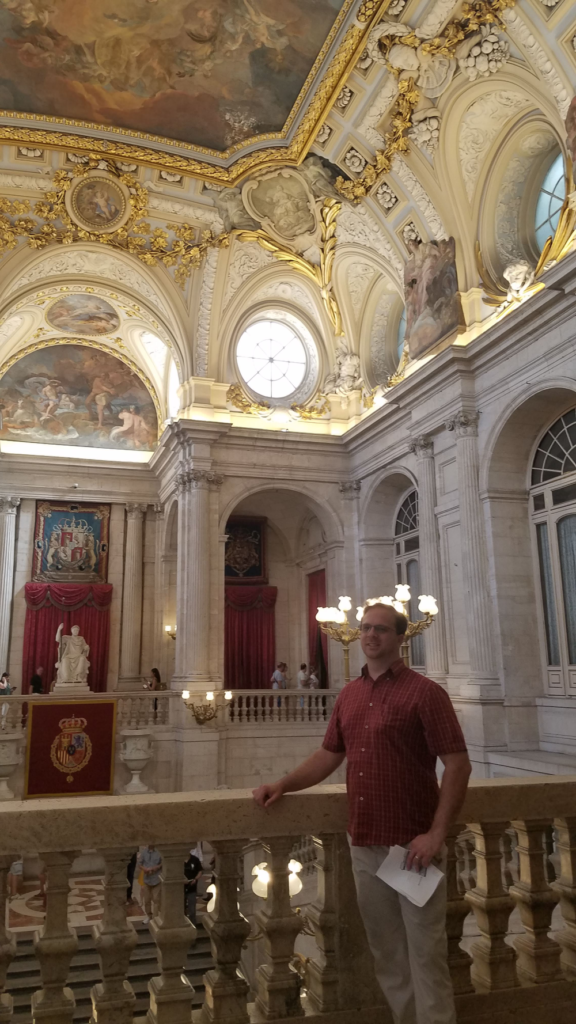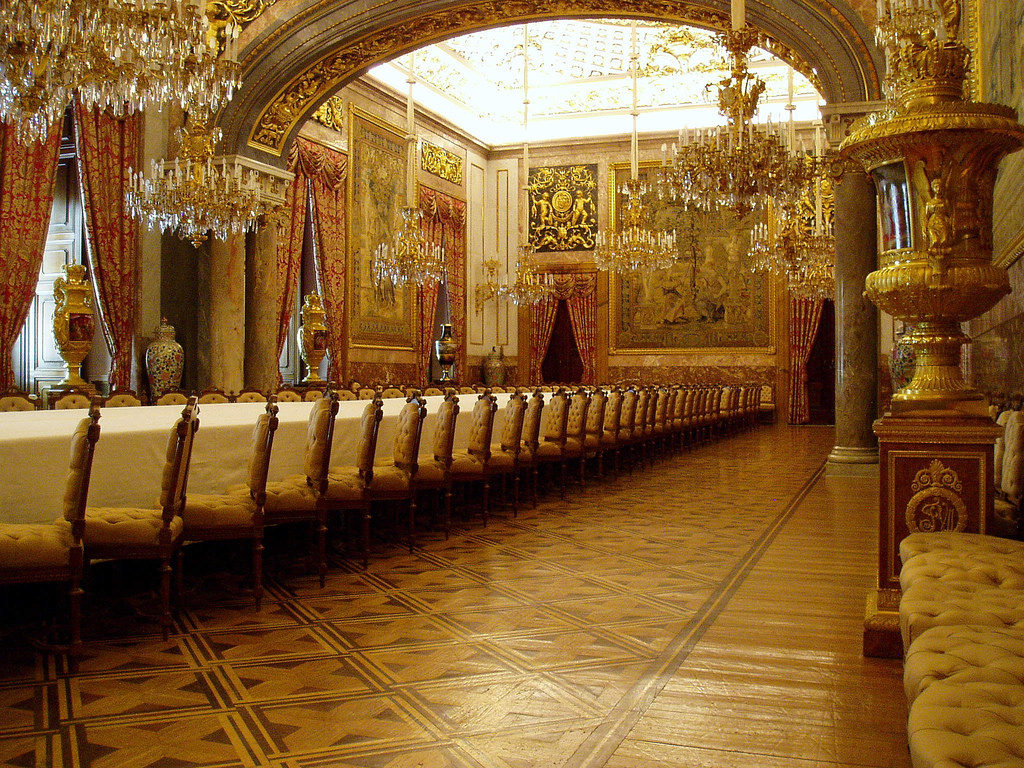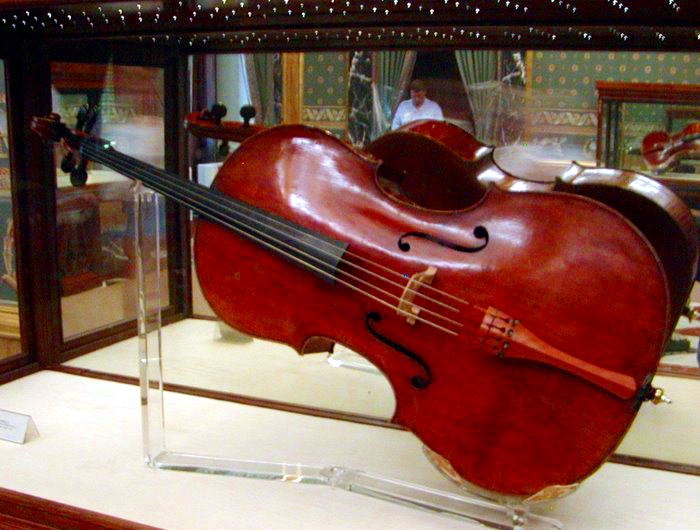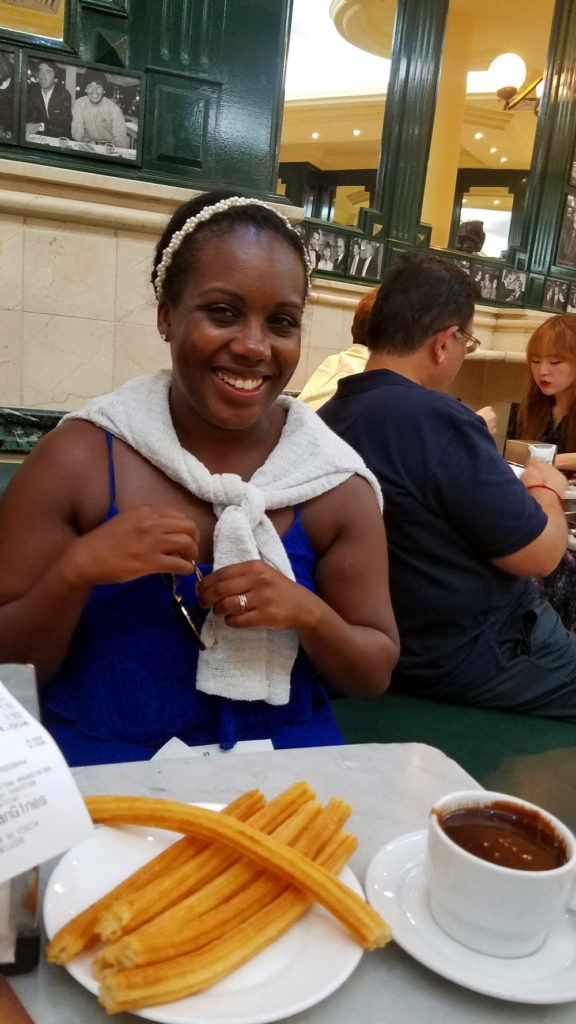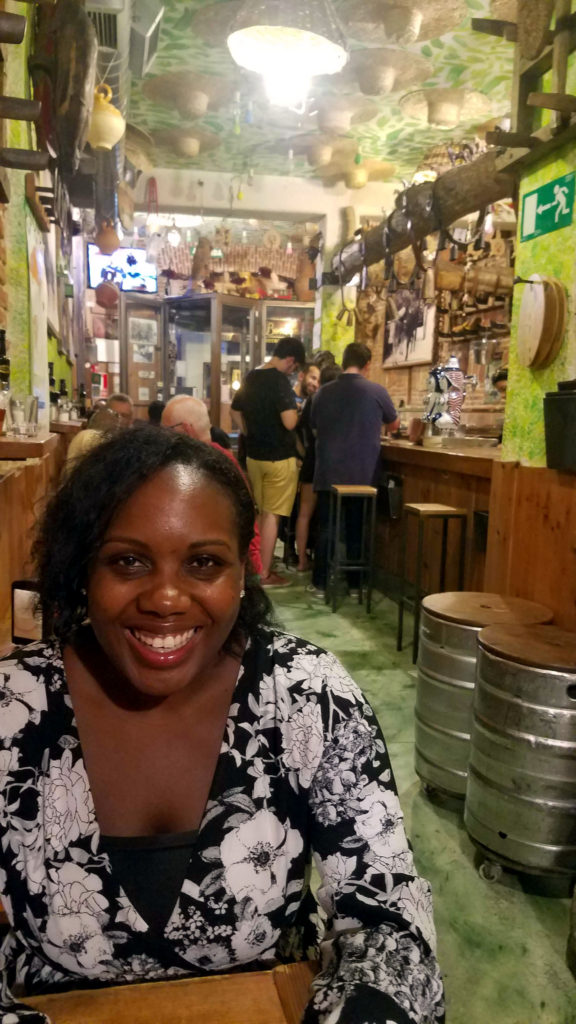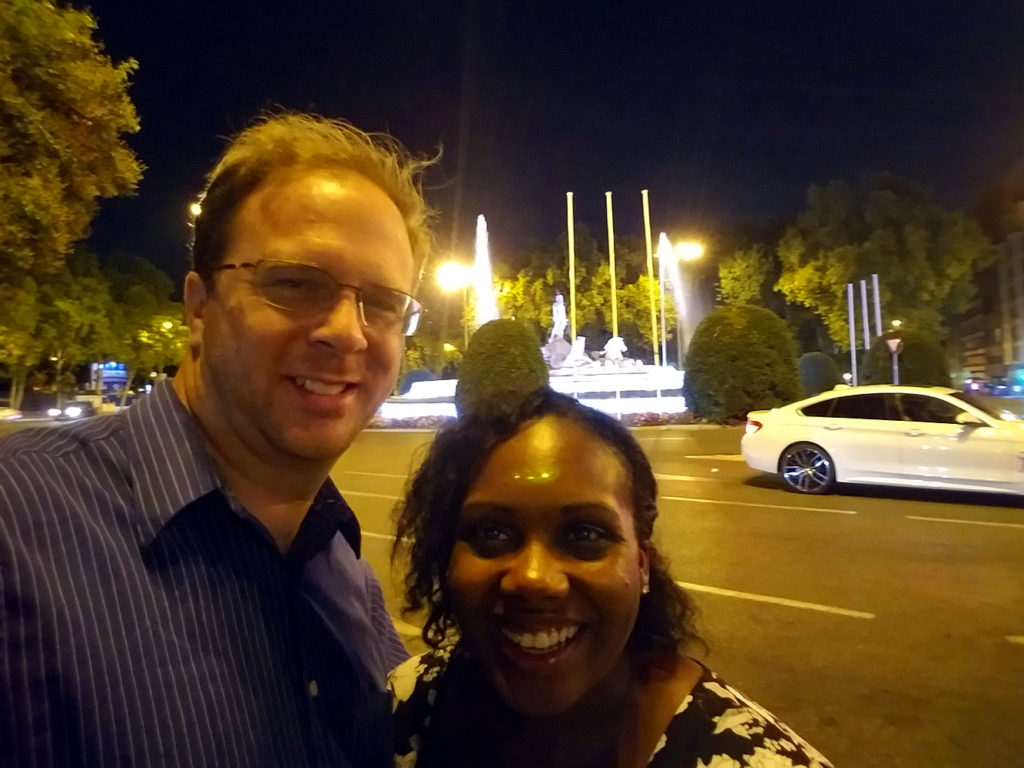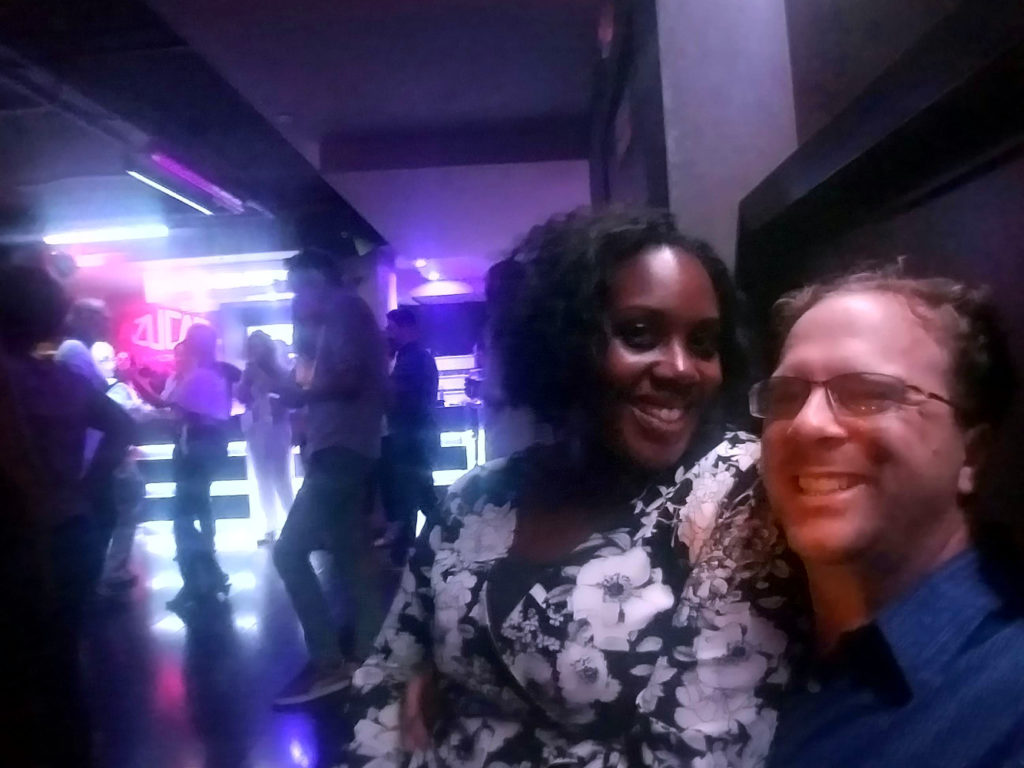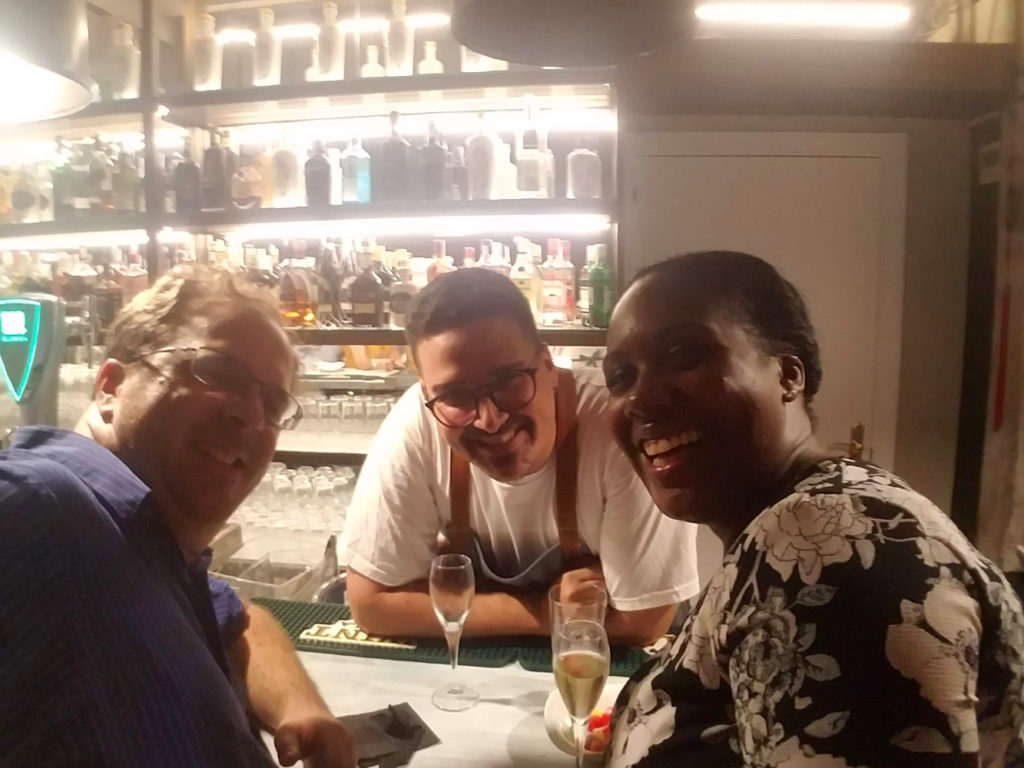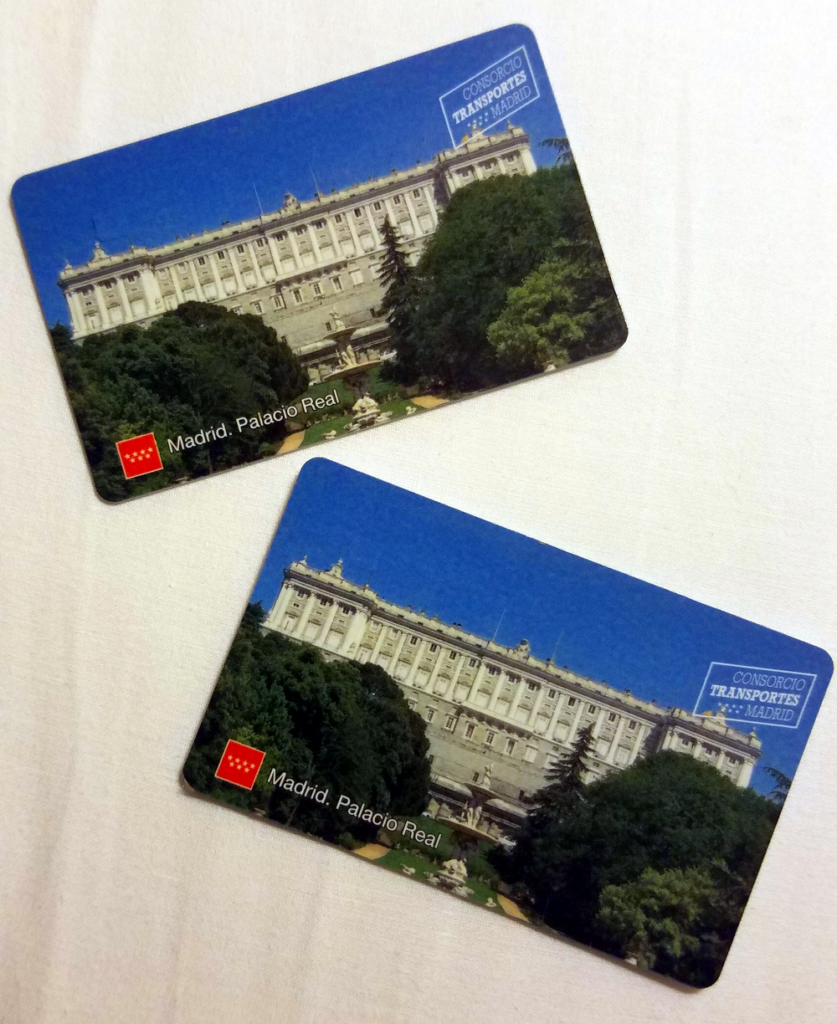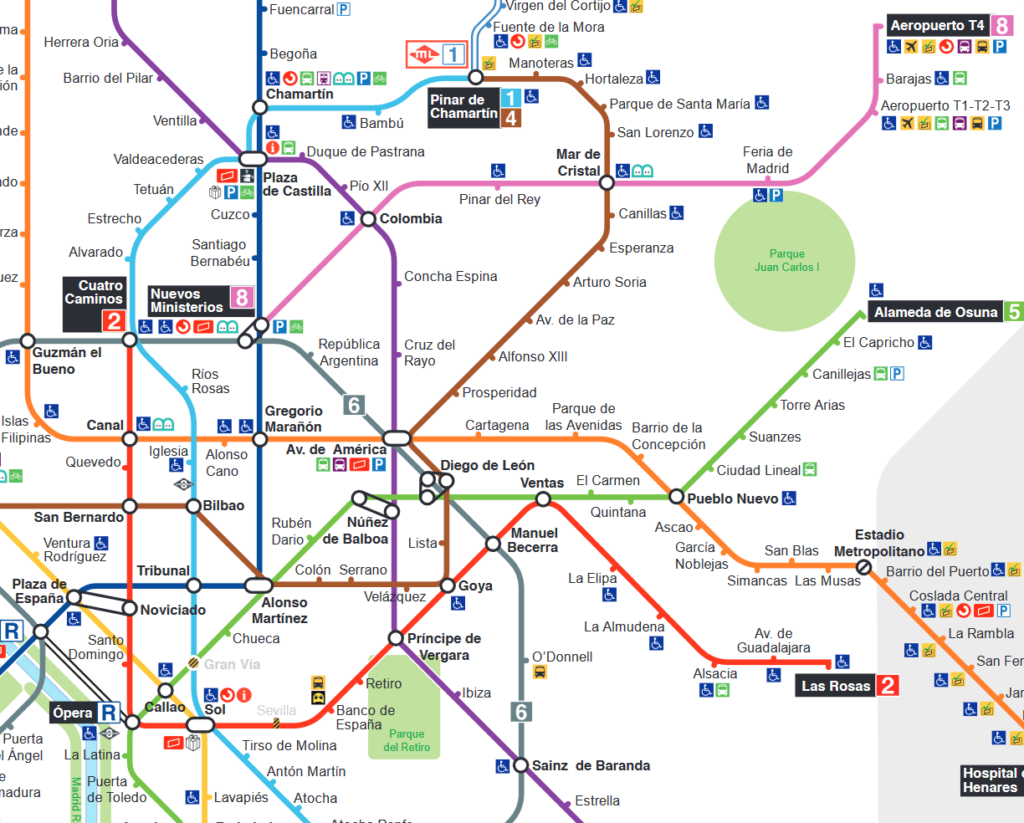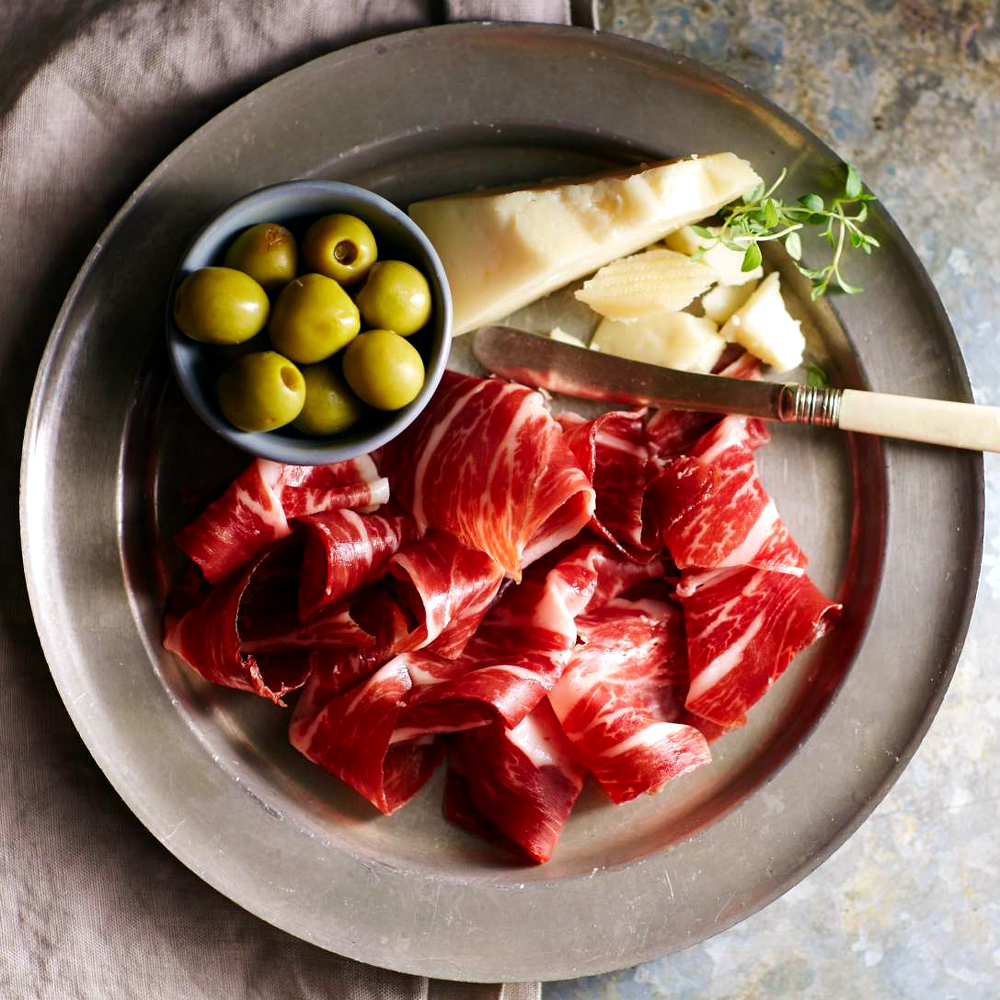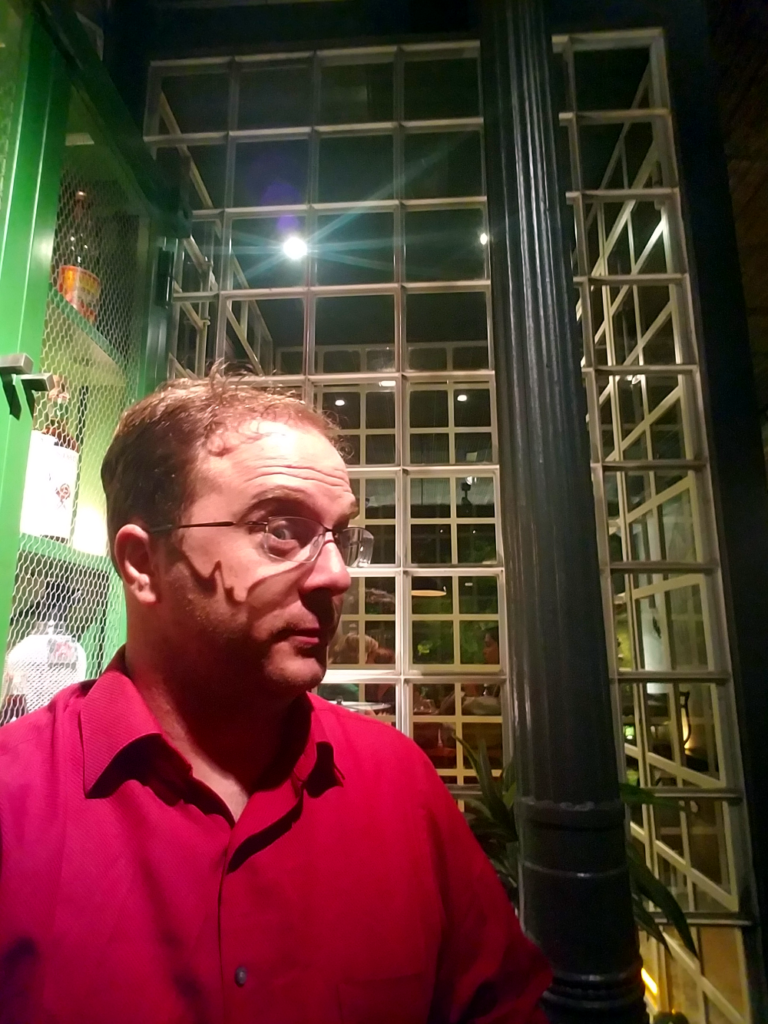A brief interlude here about our hotel.
I already mentioned that I tried to avoid staying in the middle of the super-touristy areas. Alonso Martinez stuck out as a good candidate for a couple of reasons: 1) we could get there in two Metro lines from the airport; 2) it was at a Metro station with access to multiple lines into different parts of downtown; 3) the neighborhood isn’t too busy, but is clean and professional with plenty of nightlife, museums, food…
The architecture in this area of Madrid is really fun, too. Here’s a shot from our hotel–three separate styles in three separate buildings.
It’s also a great hotel. Not a hostel, not cheap (still high-quality), not too fancy/expensive, more professional/business that touristy… “Gran Versalles” was the name, and the interior was really well-done.
The hotel building itself was pretty neat, too, with classic Madrid stone detail on the first two floors and modern steel-and-glass for several floors above that. Here’s a beautiful lady waving at me from the second floor.
Breakfast that morning was at Mama Framboise, a French-inspired Spanish bakery. It was a beautiful little shop, with detailed video of pastry-making and tart-baking looping in the background just to make sure you appreciate their craftsmanship. We enjoyed raspberry tarts, chocolate truffles, and my personal favorite: a crepe with brie and jamon iberico that just explodes flavors in your mouth. It’s the best possible combination of French and Spanish cuisine, and if you ever get a chance, try it.
From there, we took a leisurely walk through the fashion district (naturally adjacent to the French embassy) to a main promenade (Paseo de Recoletos) that we’d take back down to the museum district. Naturally, it was decorated with a number of interesting sculptures and other public art works–including a copper frog covered with dozens of esoteric symbols. (How many can you recognize?)
Another block towards the Prado (today’s destination), another fountain/sculpture.
And now we arrived at the Prado, one of the most amazing–quite possibly the best–painting museums in the world. No photos allowed, but god, do you really need them? Think of the 100 paintings you’d see in a typical art history textbook. I guarantee at least 50% of them are in the Prado. Complete originals. Everything from Greek sculptures from 500BC (just sitting out there in the open; walk right up!) to the actual Las Meninas (a Velazquez whose multiple layers of interpretation and self-commentary are still fertile grounds for analysis and enjoyment over 450 years later).
It was really fun to balance the official Prado guide (a thick and heavy tome that nonetheless serves as a mere summary of the museum’s collection) with Camille Paglia’s “Sexual Personae”, a fascinating art history survey that I was working through over the course of this trip. Lots of interesting perspectives, countless hours of intellectual investigation of amazing art. I’m in heaven.
Two of particular pieces caught me by surprise. The first was “Queen Joanna the Mad.” Joanna of Castille was married to Phillip the Fair, but according to legend, when he passed away his death drove her off the deep end. She died years later confined to a covenant and stripped of her authority. When you see the painting up close in real-life scale, the haunting look in her face is something you will never forget. The whole painting is powerful, but way the painter captured her expression of despair is particularly astonishing.
The second piece was “The Expulsion of the Jews from Spain,” which captures a particularly powerful and tragic moment in Spanish history. It’s doubly poignant when you consider that the original intent might have actually been to glorify a moment in the early inquisition (that’s Ferdinand and Isabella on the throne). Just as the rabbi was making a case for his people to remain, the Catholic priest towards the left got really pissed and denounced all Jews as accessories to the crucifixion of Christ. That was enough; case closed.
Another fun surprise was a completely unexpected exhibit of Durer originals. One of my favorite painters, his self-portraits are incredibly detailed; I have no idea how any one person had the patience to brush out each individual hair by hand, using a paintbrush that had to be the size of a whisper.
We spent hours in the Prado, walking around from highlight to highlight, and we BARELY scratched the surface. We picked out a handful of artists and exhibits to strategically target, because if you try and see everything you will need days. And that doesn’t even include Museo Reina Sofia across the street.
I’ll include one more picture from golden hour Madrid, because it nicely complements my beautiful wife. After hours walking about the Prado, though, we were exhausted. We returned to Alonso Martinez via Metro, grabbed a quick and mediocre bite from Bar Beti Jai around the corner from our hotel, then returned to our room and took a long nap.
When we woke a few hours later, we found out–even though Madrileños regularly stay up until 5 or 6 AM–that most kitchens stop serving food before midnight. Oh no! Not good news for a calorie-starved wife. We walked from establishment to establishment (trying not to get too pissed at the bartendress who haughtily suggested that we Americans try the Burger King that should still be open). A sandwich and a pizza slice from a corner market took the edge off our hunger, but it wasn’t until we found 100 Montaditos (“a hundred tasty morsels”) on the nearby street that could finally enjoy an array of pecadillos and beer/cider. It’s a cheap-and-casual Spain-style fast food hole, but it’s cheap, open late, and saved our bacon. Cheers!
